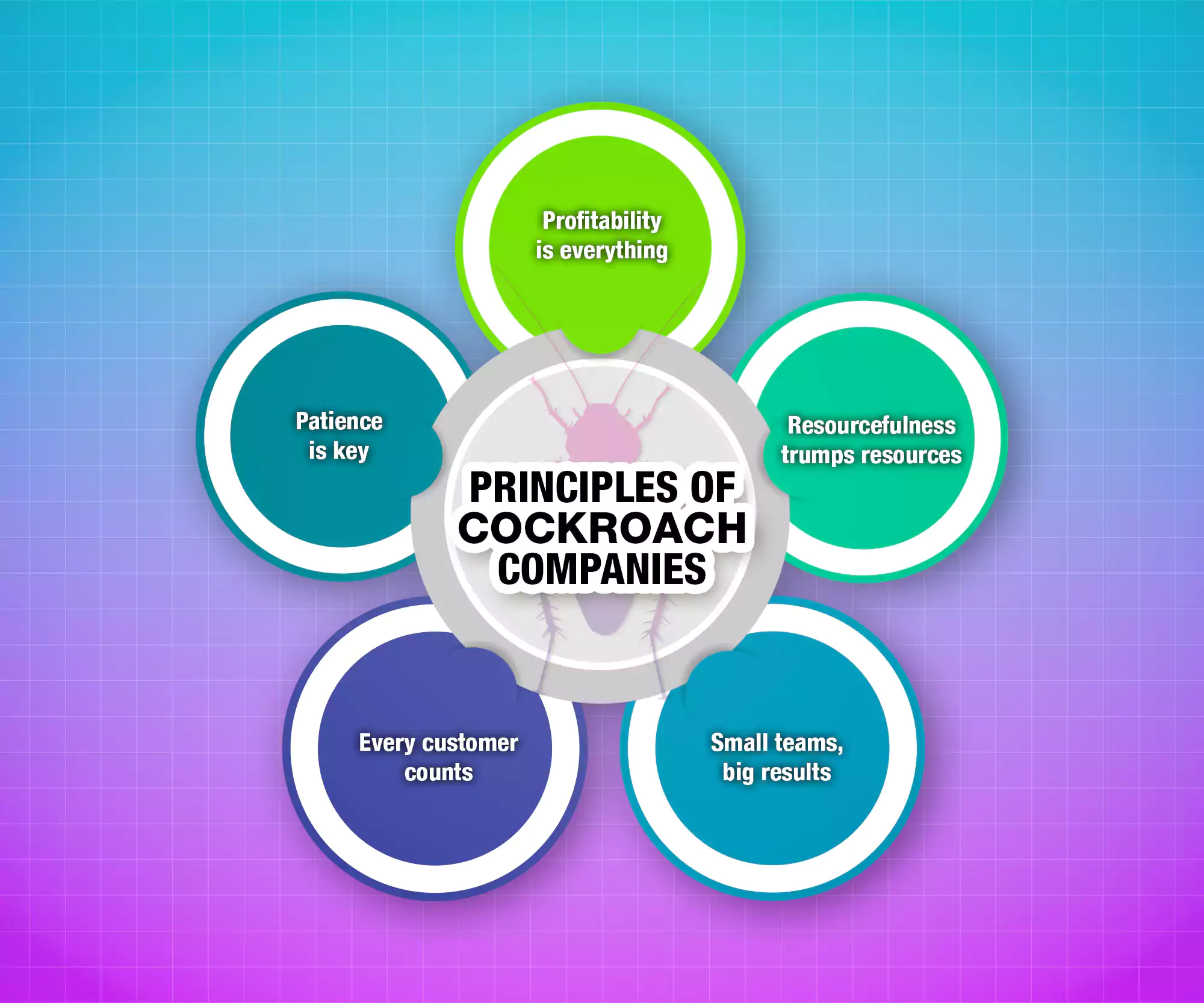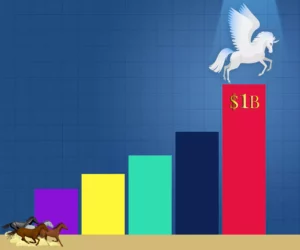
Cockroach. The name evokes only one feeling—the feeling of disgust. This creepy, crawling (and sometimes, to our nightmare, flying) pest produces the most effective jump-scares, probably better than some of the best horror movies. In the corporate world, however, the term ‘cockroach’ has gained a novel connotation over the past few years. Primarily applied to tech startups, ‘cockroach companies’ refer to companies that adopt measures to survive difficult market situations. Before we dive into cockroach companies, let us first briefly understand what unicorns are.
Unicorns: the summit of startups
Unicorn companies, as we’ve covered before, are startup ventures that have reached a valuation of $1 billion. Technology almost always drives the products and services offered by unicorn companies, allowing them to scale up their operations rapidly. Startups that turn into unicorns usually enter an industry as disruptive forces, bringing new ideas and innovations to the table. For example, when Amazon started, it aimed to deliver books to people. This venture created new avenues of growth for booksellers, writers, and publishers.
Why are unicorns becoming cockroach companies?
Global externalities, such as the COVID-19 pandemic, the Russia-Ukraine war, market fluctuations, or the recent speculation regarding a looming recession, play a crucial role in the drying up of funding for startups. During such tense times, investors prioritise liquidity, leaving startups high and dry.
According to the Crunchbase Unicorn Board, a platform that tracks companies valued at or above $1 billion worldwide, only 14 new unicorns entered the unicorn list in July 2022. In June 2022, 32 unicorns entered the list. Moreover, the 14 companies only added $26 billion in value. This was a steep decline compared to June, when the value stood at $49 billion. Even more alarming, no unicorns went public in July 2022. This meant they could not list their stocks and shares on a stock exchange such as NASDAQ or the Bombay Stock Exchange (BSE). In August 2022, Crunchbase reported that the number of unicorns dipped to 11, with the US, China, India, Indonesia, and South Korea leading the charge. The abrupt decline in unicorns is a clear sign that they are often unable to attract funding from venture capitalists and angel investors.
How are cockroach companies formed?

When funding starts drying up, unicorns need to employ all means possible to survive the competition. That’s why they metamorphose into cockroaches, which can adapt to any environment and thrive, unlike other creatures in the same conditions.
Let us look at a few of the qualities of these cockroach companies that help them thrive in any market environment.
- The primary goal of these cockroach companies is to live another day. They minimise their salaries and expenses, spend less on fixed assets, and cautiously look after their expenditure.
- Their focus is more on profitability than on market share or increasing revenues. A rock-solid revenue model becomes the norm.
- Since cockroach companies are adaptive, they can survive in harsh conditions by having a genuine product or service. They aim towards improving these two things at their own pace without spending much.
- These companies believe in having small teams (at least at first) that are more flexible and agile to generate significant results.
- Any experimental approach or high-scale operation is saved for a more opportune phase later.
Unicorns that chose the cockroach status as their safe mode
With global events creating potentially long-term disturbances in the venture capital community, several high-valued unicorns are taking the cockroach approach. Let’s take a look at two of them.
· Klarna, a Swedish unicorn in the fintech industry, valued at $4.6 trillion in June 2022, reported a steep drop the very next month. Shrinking by 86%, the unicorn’s valuation has been at $6.7 billion ever since. However, the company is taking incremental steps to bring back its value to its investors through app enhancements and advertising its recent success stories.
· New Jersey-based crypto lending unicorn, Celsius Network, filed for bankruptcy in June 2022, freezing crypto transactions on its platform. However, the company has since announced that it will overhaul its transaction system and stabilise its business.
While these companies adopt various approaches to secure themselves in the post-pandemic world, it isn’t easy to determine whether the strategies will be fruitful. No one can be certain of what lies ahead in the business sector. However, these approaches align with how cockroach companies function in challenging environments.
Guiding lights for the future
Getting compared to an insect isn’t precisely what startups had in mind when they embarked on their journey in the corporate world. On the contrary, they aimed to attain the epithet of “unicorn”, a landmark event in the life of a startup. Unfortunately, investors are now anticipating a grim future, where uncertainty looms large and global tensions appear to be escalating at an unprecedented rate. If being called a cockroach signals a company’s resilience to survive these trying times, it should happily embrace the tag. These companies can act as guiding lights for aspiring startups and other small companies aiming to make it big in the corporate world. The ways and means adopted by unicorns-turned-cockroaches can work as standard operating procedures for future startups in choppy waters. Learnings from hard times, such as the present, can pave the way for a more robust and sustainable future.



